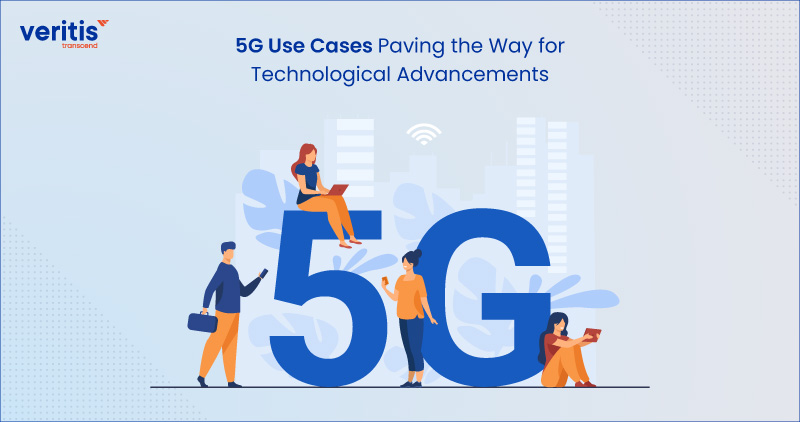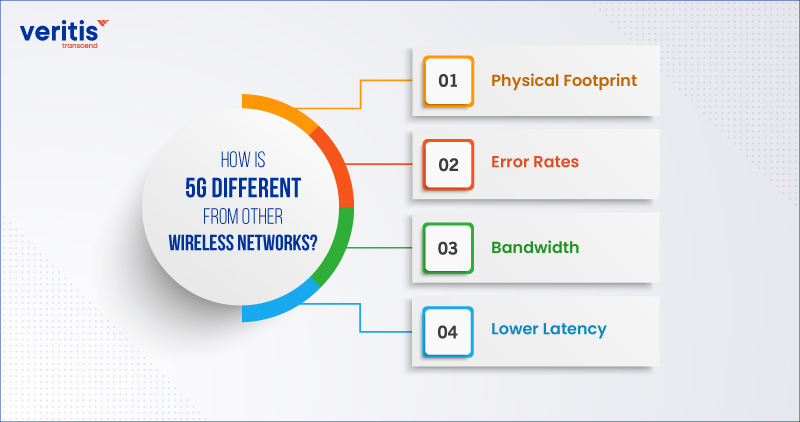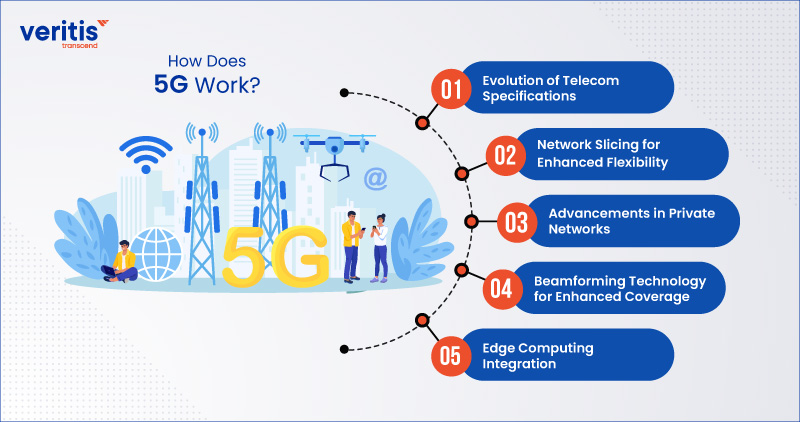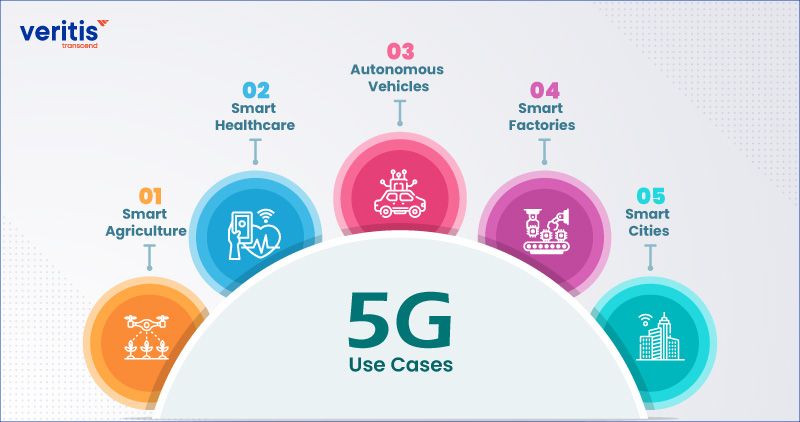
With the ongoing deployment of 5G networks, there’s a surge of inquiries about its applications and impact on daily life post-rollout. Undoubtedly, 5G will usher in a transformative era, particularly unlocking new possibilities in urban settings where over two-thirds of the global population is estimated to reside by 2050, as per UN estimates.
Amidst the buzz surrounding 5G, our role as industry leaders involves consistently disseminating insights on its deployment progress and implications, especially for commercial and industrial IoT stakeholders. Commercial 5G development follows a distinct yet parallel trajectory compared to consumer-focused initiatives.
As 5G becomes more pervasive, the field of IoT applications will evolve significantly, driven by its enhanced bandwidth and faster data transmission capabilities. However, it’s essential to acknowledge that the transformative impact of 5G won’t be universally felt. Instead, there will likely be a growing discrepancy in network connectivity and services between urban and rural areas due to the pragmatic constraints of simultaneously deploying 5G infrastructure everywhere.
At its core, it aims to establish a versatile network capable of accommodating diverse 5G IoT use cases. To realize this vision, mobile network operators (MNOs) must invest in building a dense network comprising numerous nodes, forming the backbone of 5G infrastructure.
However, this extensive network expansion comes with substantial costs, prompting MNOs to prioritize urban areas with a more extensive potential customer base, ensuring a quicker return on investment. Consequently, the rollout of 5G deployment in rural regions is expected to proceed more gradually.
What is 5G?
5G, or 5th generation mobile technology, is the latest standard in cellular networks. Like its predecessors—3G, 4G, and 4G LTE—5G utilizes radio waves to transmit data. Yet, it distinguishes itself with notable advancements in latency, throughput, and bandwidth, enabling significantly faster download and upload speeds than earlier network generations.
One of 5 G’s most significant enhancements is its remarkable latency, throughput, and bandwidth improvements. Latency, the duration required for data to move from its original to its target location, is significantly reduced in 5G deployment networks, leading to near-instantaneous responsiveness. This is vital for applications needing real-time interactions, such as online gaming, video conferencing, and autonomous vehicles.
Moreover, 5G boasts impressive throughput and bandwidth capabilities, enabling faster download and upload speeds than earlier network generations. This implies that users can experience seamless streaming of high-definition videos, faster file downloads, and seamless browsing experiences even in densely populated areas with heavy network traffic.
Furthermore, the future of 5G technology holds immense potential to revolutionize multiple industries and sectors, including healthcare, transportation, manufacturing, and entertainment. Its enhanced connectivity and reliability pave the way for innovative applications like remote surgery, intelligent transportation systems, industrial automation, and immersive virtual reality experiences.
In essence, 5G represents a significant leap forward in the evolution of mobile communications, unlocking new possibilities for connectivity, productivity, and technological innovation across the globe.
Useful Link: Top 6 IoT Trends to Drive Innovation for Business in 2024
How is 5G Different From Other Wireless Networks?

Since its introduction in 2019, 5G broadband technology has emerged as a transformative force, promising substantial 5G benefits for consumers and businesses. Central to its appeal is its capacity to handle vast volumes of data generated by increasingly complex devices connected to its networks.
With the evolution of mobile technology, the demand for faster speeds to support emerging technologies such as artificial intelligence (AI), the Internet of Things (IoT), and machine learning (ML) has escalated beyond the capabilities of 3G and 4G networks. Enter 5G, with its unparalleled data transfer speeds, is poised to unlock these innovations’ full potential.
1) Physical Footprint
5G utilizes more miniature transmitters than previous network generations, enabling discreet placement in various locations. Additionally, the “cells” forming the foundational structure of 5G networks are smaller and more power-efficient, optimizing connectivity coverage.
2) Error Rates
Leveraging an Adaptive Modulation and Coding Scheme (MCS), 5G surpasses the capabilities of 3G and 4G networks, resulting in significantly lower Block Error Rates (BER). This enhanced error correction mechanism ensures more reliable data transmission.
3) Bandwidth
Leveraging a broader spectrum of radio frequencies, 5G networks can operate across a more comprehensive range of bandwidths than their predecessors. This expanded bandwidth capacity translates into increased support for more connected devices concurrently.
4) Lower Latency
A standout feature of 5G is its substantially reduced latency, measured by the time taken for data to travel from source to destination. This dramatic latency reduction enhances real-time responsiveness, facilitating tasks such as file downloads and cloud-based operations with remarkable speed and efficiency.
In summary, 5G represents a monumental leap forward in wireless technology, offering unparalleled capabilities to meet the escalating demands of the digital era. Its technical advancements in footprint optimization, error correction, bandwidth utilization, and latency reduction position it as a game-changer across various industries and applications.
Useful Link: 5G Trend: A Glance at Impact on Cloud Computing and Remote Operations
How Does 5G Work?

5G networks operate on a cellular infrastructure, where geographic regions are partitioned into cells, each supported by an antenna and a base station.
Wireless technology devices, from smartphones to IoT devices, establish internet connections via radio waves within these cells. While the underlying technology shares similarities with previous generations like 3G and 4G, the decreased latency of 5G and IoT allows for notably accelerated download speeds, potentially achieving up to 10 gigabits per second (Gbps) in particular situations.
1) Evolution of Telecom Specifications
The foundation of 5G lies in the 5G NR (New Radio) standard, defining a novel radio access technology (RAT) specification for all 5G mobile networks. Initiated through the 3rd Generation Partnership Project (3GPP) in 2018, this global endeavor aimed to establish standards guiding the design of devices and applications compatible with 5G networks. The ensuing years witnessed rapid growth, with 45% of networks worldwide now 5G-compatible, a figure projected to surge to 85% by the decade’s end, according to Ericsson.
2) Network Slicing for Enhanced Flexibility
One of the distinctive features of 5G networks is the capability for network optimization operators to provision multiple independent virtual networks alongside public ones on the same infrastructure. This concept of network slicing revolutionizes connectivity by offering tailored solutions for different 5G IoT use cases or business models. Enterprises, for instance, can create dedicated virtual networks for specific applications or departments, enhancing customization and security while optimizing user experiences.
3) Advancements in Private Networks
Deploying private 5 G networks complements the concept of network slicing and introduces heightened levels of personalization and security compared to preceding wireless generations. Global enterprises increasingly favor private 5G network optimization architectures for greater control and mobility, enabling connectivity solutions tailored to their specific operational needs and security requirements.
4) Beamforming Technology for Enhanced Coverage
5G networks leverage beamforming technology to improve signal strength and coverage. By directing radio waves towards specific devices rather than broadcasting signals indiscriminately, beamforming enhances efficiency and reliability, especially in densely populated urban environments or areas with challenging terrain.
5) Edge Computing Integration
The integration of edge computing in 5G networks brings processing capabilities closer to end-users, reducing latency and enabling real-time data processing and analysis. By distributing computing resources at the network edge, 5G networks support applications requiring low latency, like industrial automation, augmented reality, and autonomous vehicles, with unprecedented efficiency and responsiveness.
Useful Link: How Veritis Anticipates and Resolves Financial Service Challenges
5G Use Cases

Having acquired a more profound comprehension of the mechanics of 5G and IoT technology, let’s delve into the exciting possibilities it enables through various applications.
1) Smart Agriculture
In agriculture, 5G technology promises to revolutionize traditional farming practices through enhanced connectivity, precision agriculture, and autonomous farming systems. By leveraging 5G-enabled IoT devices, sensors, and drones, farmers can gather real-time data regarding soil moisture levels, crop health, and environmental conditions, enabling precise decision-making and optimized resource allocation.
Moreover, 5G for business facilitates the deployment of autonomous farming machinery equipped with AI algorithms, enabling tasks such as planting, irrigation, and harvesting to be performed with unprecedented efficiency and accuracy. This integration of 5G technology in agriculture paves the way for sustainable farming practices, increased crop yields, and enhanced food security.
2) Smart Healthcare
Integrating 5G for business technology in healthcare systems unlocks transformative capabilities, facilitating advancements in telemedicine, remote patient monitoring, emergency response, and medical research. High-speed, reliable connectivity provided by the 5G applications network enables real-time communication and collaboration among healthcare professionals, regardless of geographical constraints. Applications such as remote surgery leverage 5G’s low latency and high bandwidth to enable precision procedures conducted by robotic systems, supported by immersive live streaming capabilities.
Additionally, 5G applications facilitate the seamless exchange of medical data and diagnostic information, empowering healthcare practitioners with timely insights for informed decision-making. Beyond clinical settings, 5G-enabled technologies facilitate public health initiatives, including contact tracing and outbreak management, by enabling swift and secure data transmission for effective response strategies.
3) Autonomous Vehicles
The advent of 5G technology has revolutionized the field of autonomous vehicles, encompassing everything from self-driving cars to drones. Before the emergence of 5G for business cellular standards, the realization of fully autonomous vehicles faced significant hurdles due to the limitations of data transmission in 3G and 4G networks.
With the unparalleled connection speeds of 5G, transport systems for various modes of transportation, including cars and trains, have experienced a substantial acceleration in performance. This advancement has fundamentally transformed autonomous systems’ connectivity, communication, and collaboration capabilities, ushering in a new era of mobility.
4) Smart Factories
The convergence of 5G, AI, and ML is on the brink of reshaping the manufacturing sector, driving advancements in automation, efficiency, and resilience. By integrating 5G connectivity with AI and ML capabilities, factories are transitioning towards smarter operational models, where tasks previously reliant on human intervention are increasingly automated.
This transformation extends to equipment maintenance, optimization, and logistics, where intelligent systems empowered by 5G connectivity streamline operations and enhance productivity. Additionally, 5G-enabled technologies such as drones, IoT devices, and smart cameras are pivotal in facilitating efficient asset management and ensuring optimal resource utilization within manufacturing environments.
5) Smart Cities
The concept of smart cities, empowered by 5G network optimization speeds, is reshaping urban fields by fostering innovation across various domains, including transportation, public safety, environmental sustainability, and healthcare. Leveraging 5G-enabled sensors and IoT devices, cities can harness real-time data insights to optimize traffic management, minimize congestion, and enhance air quality.
Furthermore, 5G-powered smart grids enable dynamic energy management, leveraging AI and ML algorithms to optimize energy distribution and consumption patterns. These initiatives contribute to realizing sustainable urban ecosystems, facilitating reduced carbon emissions and enhanced resource efficiency.
Conclusion
The emergence of 5G networks signals a profound technological shift, offering many transformative 5G IoT use cases across industries. From precision farming and remote healthcare to autonomous transportation and smart manufacturing, 5G applications are reshaping how we live, work, and interact with the world around us. As firms seek to leverage the potential of 5G, Veritis, a recognized leader in digital transformation, stands poised to guide organizations through this technological revolution with its expertise and comprehensive solutions.
With accolades such as the Stevie and Business Awards, Veritis is committed to empowering businesses to harness the full capabilities of 5G technology. Whether it’s strategy consulting, implementation, or managed services, Veritis offers tailored solutions to help organizations thrive in the 5G era. Embrace the future of connectivity with Veritis and explore new possibilities for innovation and growth.
Looking for Support? Schedule A Call
Also Read:
- Impact of AI in Telecommunications Industry
- Guide to Digital Transformation Technologies and Their Business Impact
- All You Need to Know About Technology Business Management
- How Veritis Anticipates and Resolves Financial Service Challenges
- 5 Key Benefits of Implementing Cloud Financial Services for Your Business
- The Impact of AI in the Telecommunications Industry: A Statistical Overview